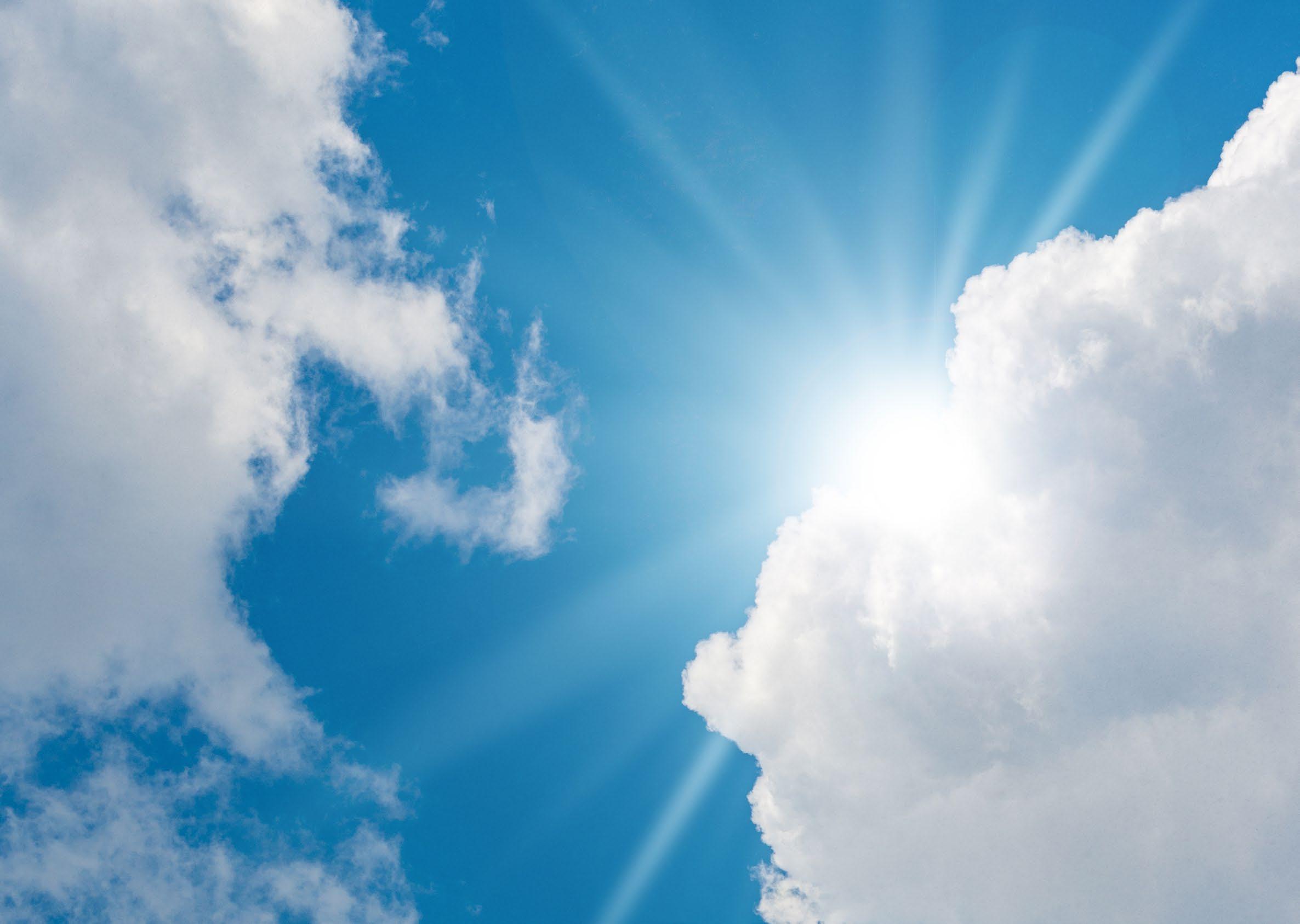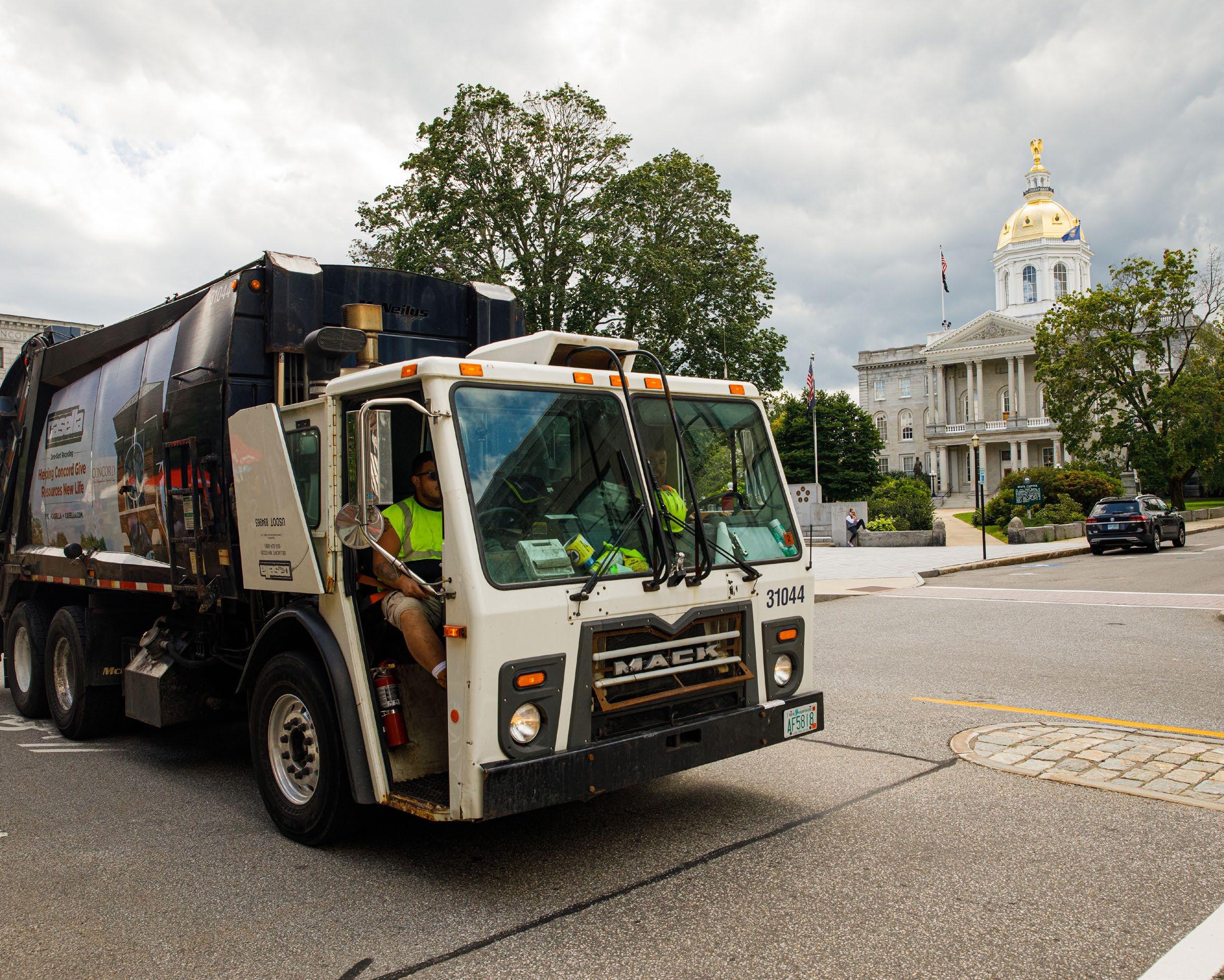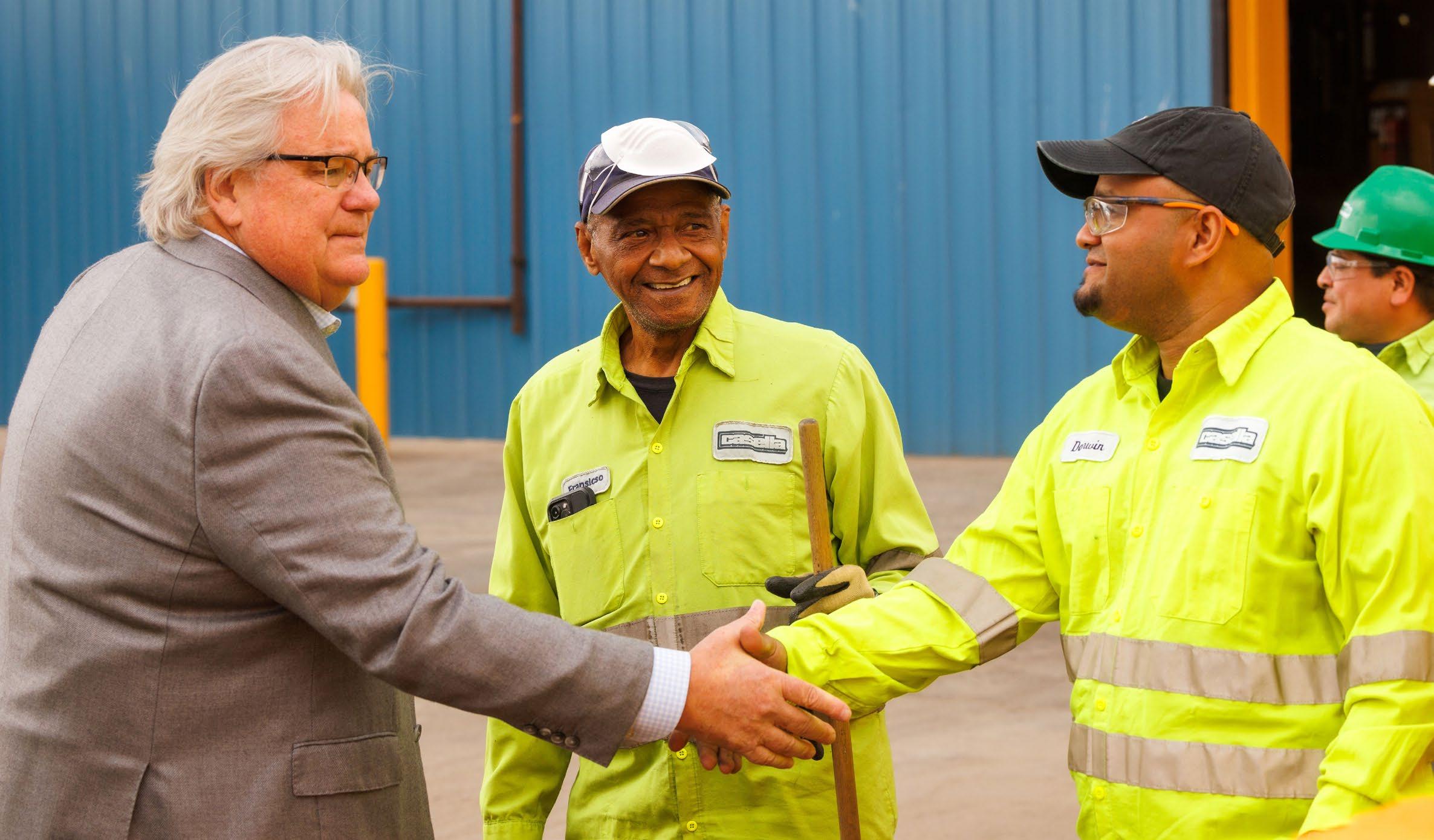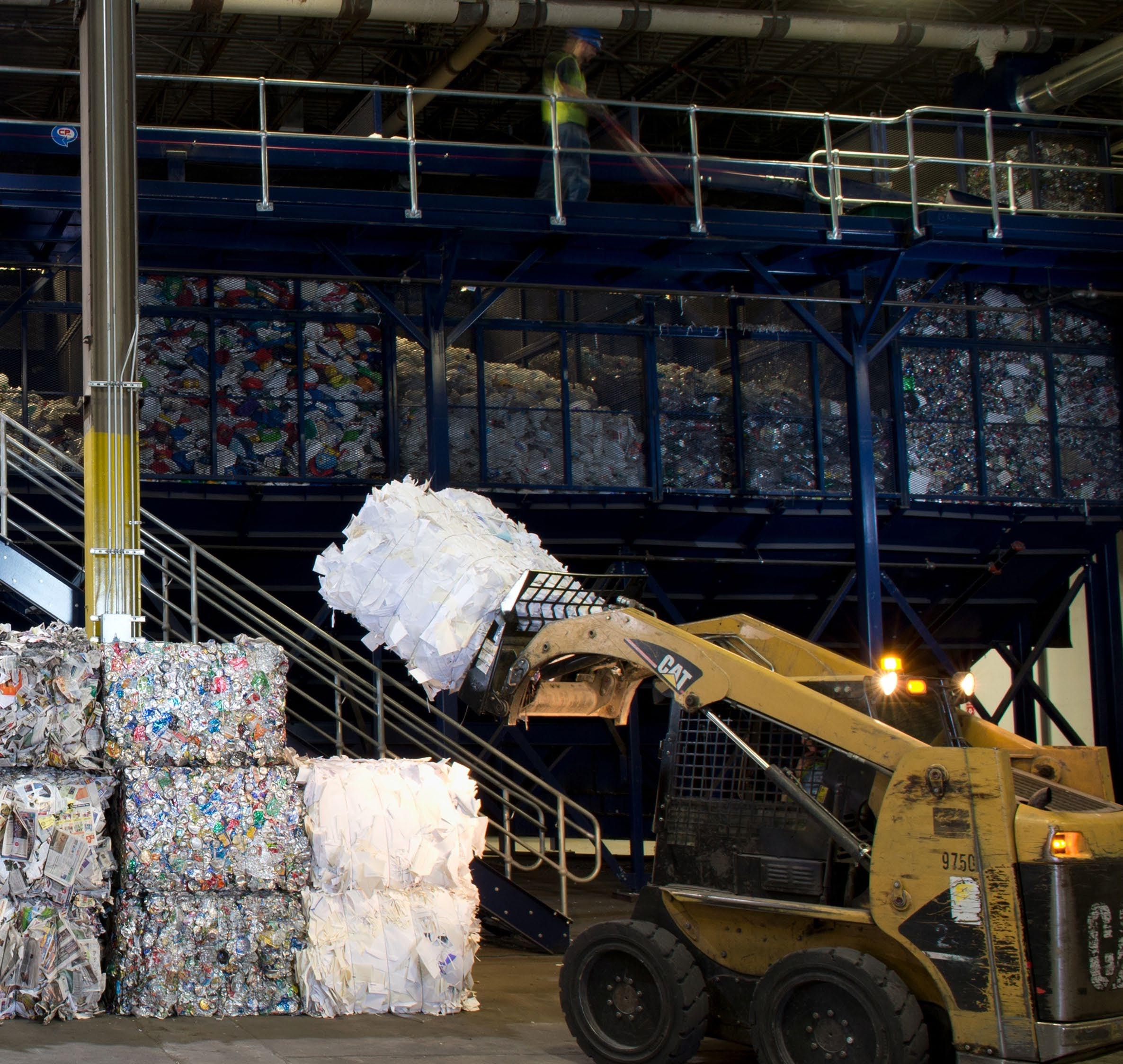DRIVING SUSTAINABILITY
IN NEW HAMPSHIRE



Career Paths with Purpose
Infrastructure that Moves Us
Giving Resources New Life
And More!
4 DRIVEN BY OUR CUSTOMERS AND COMMUNITIES Enabling sustainability throughout the Granite State
6 DRIVEN TO SUCCEED Career paths with a purpose
10 DRIVEN TO RECYCLE BETTER Recycling works when we work together
12 DRIVEN TO INNOVATE An integrated approach to giving resources new life

DRIVEN TO SERVE Helping New Hampshire achieve its sustainability goals
BY JOHN W. CASELLA CHAIRMAN & CEO CASELLA WASTE SYSTEMS, INC.
Modern solid waste and resource management relies on an integrated set of solutions and critical infrastructure designed to capture material from the waste stream, put it to a higher and better use, and keep people and our natural environment safe. This approach considers the overall benefits of the entirety of our efforts, and not simply those of a single facility, in a single location.
Years ago, each town was responsible for its waste disposal, and they generally achieved this through what was then known as the “town dump.” As society became more aware of the need for better environmental protections, increased regulations, and advanced infrastructure, society shifted from that model, began implementing recycling programs, began closing unlined landfills, and the number of active disposal facilities throughout the northeast became fewer.

Today, being cooperative and borderless in concept creates a regional marketplace for recycling and waste disposal that makes economic and environmental sense. Transfer stations aggregate waste and recycling from smaller vehicles into larger trailers, and those trailers are then hauled to locations that are further away. New Hampshire recycling programs, for example, exist primarily due to recycling facilities located outside of the state, while disposal sites throughout New Hampshire accept a portion of waste from bordering states. Ultimately, this means fewer trucks on the road, fewer facilities
INSIDE:
2

to construct and operate, and more opportunity to commit resources to the research and development of innovative new processing capabilities, and environmental protections.
In September 2022, the New Hampshire Department of Environmental Services (NHDES) published an updated Solid Waste Management Plan. The plan outlined eight specific objectives designed to improve solid waste management in the state over the next decade, and to assist the state in achieving its goal to reduce the disposal of municipal solid waste (MWS) and construction and demolition debris (C&D) by 25% by 2030 and by 45% by 2050.
Casella’s proposed Granite State Landfill will be similar in size and scope to the existing North Country Environmental Services Landfill (NCES) located in Bethlehem and will provide the necessary disposal capacity for more than 60,000 customers throughout New Hampshire that will be needed when NCES closes after 2026. The public benefit demonstration submitted as part of the solid waste permit application for GSL addresses the goals as outlined in the state’s plan, aligns with the state’s solid waste hierarchy, and includes specific actions designed to assist the State in achieving each goal through four main elements:
• Residential Recycling Outreach and Education
• Resource Management Planning for Large Generators
• Innovation and Circularity Pilot Programs for Targeted Material Streams

• Infrastructure Needs Assessment
What is outlined in this public benefit demonstration is not theoretical. Included in the documentation are real-world examples being deployed every day, in New
Hampshire and beyond, that are helping businesses, municipalities, and others achieve their sustainability goals both economically and environmentally.
Examples include Casella’s award-winning work with New Hampshire manufacturer Hypertherm, zero-waste initiatives being undertaken at Boston University, reuse programs deployed in partnership with Goodwill of Northern New England, and cutting-edge recycling education being delivered directly to customers through their mobile devices to improve recycling at the residential level.
In addition to the necessary disposal capacity proposed at GSL, Casella is also proposing to build a state-of-the-art material recovery facility (MRF) in New Hampshire. The MRF would be the first of its kind in the state and is expected to process approximately 40,000 tons of recyclables per year, which would include approximately 29,000 tons of recyclable materials collected in New Hampshire that are currently processed at another facility in Massachusetts. The new facility will reduce the time and costs associated with transporting New Hampshire recyclables from the curb to the MRF and will help to incentivize additional recycling by New Hampshire municipalities and businesses. The climate change impact associated with recycling this additional volume of material is significant, creating a reduction in greenhouse gas emissions of 29,441 metric tons of carbon dioxide equivalent annually based on the US EPA Warm Model.
This approach to modern materials management will move New Hampshire forward from its position today and open new opportunities to recycle more, giving resources new life, and preserving its natural environment for years to come.
3
DRIVEN BY OUR CUSTOMERS & COMMUNITIES
Enabling sustainability throughout the Granite State
Casella promotes recycling and sustainability through partnerships and educational programs.
RECYCLING BY THE TONS
Casella partners with private and public entities throughout New Hampshire to reduce waste and promote reuse and recycling. Here are several examples of how the company is helping customers meet recycling and sustainability goals and expanding awareness in the Granite State. In 2022, Casella helped New Hampshire customers recycle 19,200 tons.

COCA-COLA BEVERAGES NORTHEAST BEDFORD, NH
Coca-Cola Beverages Northeast is one of the nation’s largest Coca-Cola bottlers. Since 2016, the partnership between Coca-Cola Northeast and Casella has grown to encompass 26 branches, 46 vendors and 36 managed waste and recycling streams.
Today, Coca-Cola Northeast locations have collectively contributed to a diversion rate of 93.7 percent — a testament to the company’s devotion of time, effort and resources to creating a more sustainable future for generations to come.
Collection Facility
Recycling Facility
Landfill
Transfer/Drop Off Facility
Casella, a regional solid waste resource management company, has operating locations across the State of New Hampshire.

CAMP ROBIN HOOD FREEDOM, NH
Camp Robin Hood, a sleepaway summer camp located in Freedom, New Hampshire, has harnessed the power of food waste, in partnership with Casella, to further innovate its commitment to sustainability.
Camp Robin Hood’s installation and implementation of the Grind2Energy system to recover food waste with anaerobic digestion marks the first summer camp in the nation to adopt the technology.
4
TO LEARN MORE > <
TO LEARN MORE

ROBOTICS PROGRAM, PLYMOUTH STATE UNIVERSITY
Embracing new challenges is a specialty for students in the Plymouth State University Robotics program. The group is currently teaming up with members North Country Environmental Services Landfill in Bethlehem to repair robotic technology to help manage bird and wildlife populations at Casella landfills.
This hands-on educational experience empowers students to apply their skills for real-world impact in pioneering modern solutions in the field of robotics..
FLAG COLLECTION PROGRAM BETHLEHEM, NH
U.S. Army veteran and Casella Landfill Operations Manager Bruce Grover has incorporated his patriotic roots into his daily responsibilities at the North Country Environmental Services Landfill in Bethlehem.
To reduce the risk to employees and create awareness of proper retirement of the U.S. flags, Grover recently implemented a new flag retirement drop box located at the Bethlehem transfer station, with a mission to ensure worn U.S. flags no longer suitable for display are properly retired in an honorable and respectful manner.


CASELLA SUSTAINABILITY INTERNSHIP PROGRAM
The Casella Sustainability Internship Program provides talented candidates with critical exposure to hands-on learning opportunities with customers, teams, and leaders across our operating footprint.
Over the course of the 10-week program, interns will complete various field assignments, as well as participate in projects ranging from data and research-driven initiatives to community engagement events and marketing improvements.
5
n TO LEARN MORE >
MORE >
TO LEARN
< TO LEARN MORE

DRIVEN TO SUCCEED Career paths with a purpose
Since 1975, Casella has provided meaningful employment opportunities to people from throughout the Northeast, strengthening workforces and the local economy, while serving their customers and the community.
Casella provides sustainable and rewarding career paths through its CDL training, frontline leadership training, and new diesel technician training program.
What began as a single truck enterprise, Casella now employs more than 4,300 people with more than one third of its work force made up of truck drivers, who provide curbside waste and recycling services daily. Drivers are always in demand, and in November 2020, Casella created its CDL (commercial driver’s license) training program.
Based in West Rutland, Vermont, the program offers 10 employees a month CDL training over 10 consecutive days. The training, which is valued at $5,000 per driver, is
free to the student if they stay with the company for two years. Casella pays CDL apprentice candidates and covers food, lodging and travel. After training, candidates return to their home state for testing.
Rather than having a degree or previous experience, CDL training manager Bill Baptie says Casella instead seeks people who are reliable, safe, and dependable.
“You can’t teach someone to be reliable and friendly and consistent and honest. If they have those things, we can teach them to drive a truck,” says Baptie.
Drew Baccei formerly proctored tests for Casella for the Vermont DMV. Now, he’s in charge of the program Baptie helped pioneer.
Baccei agrees that a background in operating heavy equipment isn’t necessary.
“A lot of people come to school that have never been in a truck before. We get them all on the same page,” adds Baccei.
Participants learn industry-specific training, like safely navigating and backing up on dirt and secondary roads, taking wider turns, recognizing blind spots, and handling emergencies.
Students learn pre-trip and post-trip protocol -- general
6

one of more than 200 candidates to pass through the Casella CDL Training Program since its inception in 2020. With a nearly 100 percent graduation rate, the program supports the continued growth of the regional labor force and provides opportunities for young people looking to secure meaningful employment through careers in the trades.
safety inspection processes to confirm the truck is road-worthy. Tasks include checking tire-tread depth, brake systems, and lights and fluids.
Debra West of Manchester, the program’s 100th graduate, found her calling there. West began as a temporary laborer in July, 2021, helping on non-CDL trucks, then became a full-time laborer that September.
West’s mentor and site manager, Rick Moriarty, told her about the CDL program, saying “I saw something in you.” The response struck a chord with her. “I said if he believes I can do it, I can do it,” says West.
While she still loves riding on the back of the trucks, it was the job itself, and the people, that attracted her.

“I absolutely fell in love with it. I think it was the people that I was working with. I just felt like this was where my career path was going,” West said.
Baptie, who trained West, says she possessed the qualities Casella sought from the start: promptness, reliability, and honesty.
“She was a standout,” Baptie says.
Baccei, who also trained West called her a “team leader.”
“She’s that one that rallies the troops. She’s got a positive attitude. She was the same way at her division when I first met her in Sanford (Maine),” says Baccei.
“She demonstrated exactly what we’re looking for. She was the person that helped someone else who was having more challenges than she was,” says Baptie.

“Leadership here is all about growth. They are pushing me towards that next step as a supervisor or manager down the line,” West said in 2022.

7
Driver Maritza ‘Kixx’ Diaz is
Above, Debra West on the job.

Four months after completing the CDL program, West became a supervisor in Casella’s Salem, N.H., division.
“I didn’t want to drive for my whole career. I wanted to move up a little bit, learn more about the business, and grow. I talked to (division manager) Martin Golubski. And finally, I got the courage to apply. And he hired me on,” says West.
As a supervisor, West ensures drivers operate safely, works on scheduling and routes, and monitors risk factors that come with driving in residential areas.
West’s day begins at 5:30 a.m. and ends at 5:30 p.m. She says the long days are worth it because of the people she works with.
“I get along with all the drivers. As you’re coming in (each day), we joke around and have fun,” says West. “I’m still
learning a lot and I look forward to continuing to learn in the frontline leadership program. The opportunities have always been there for someone who is willing to learn and get things done.”
Baccei says guiding new employees like West on this path makes Casella stand out.
“Getting their CDL license is going to open the door for them to maybe be a lead driver or driver-trainer. The next step from that would be a route supervisor, and then an operations manager. The path is clear, and people like that,” says Baccei.
West says the program is user-friendly and uncomplicated, and instructors provide extra support, which results in an impressive completion and retention rate. To date, the program has graduated over 200 newly minted drivers and has a retention rate of 85 percent.
For those considering Casella’s CDL program, West simply says, “do it!”
Baptie reiterates that message to CDL incoming program participants.
“I tell our students all the time: ‘This is not the end for you.’ Now, opportunities are going to open for you,” Baptie says.
With the proven success of its CDL training program, Casella has recently added a diesel technician program, where employees learn general preventative maintenance techniques and earn certifications, such as the federal air brakes certification, as part of the training.
“We launched our CDL school with a long-term vision of building out this next phase of training to support our continued growth and needs from a technician standpoint,” said John W. Casella, Chairman and Chief Executive Officer of Casella.
“These programs help to build a sustainable pipeline of frontline drivers and technicians that will have the right skills and values to continue providing outstanding service to our customers in the near-term, while simultaneously getting people on debt-free paths to long and rewarding careers in our industry.”
Currently operating out of the Company’s Williston, Vermont Hauling Division, the Diesel Technician Training School will eventually be located alongside the CDL Training School in West Rutland, Vermont within proximity to its Home Office as well as the new Casella Engagement and Learning Center, located at the former College of St. Joseph.
“Many of our leaders throughout the company began their careers on the frontlines of our business,” Casella said. “What we have seen is that some of our best division managers, operations managers, and maintenance supervisors all began their careers by doing the work that they are now leading. These programs are designed to make it easier for qualified candidates to enter our industry by eliminating hurdles such as lack of funds to pay for school or tools and put them on a path to succeed for themselves, their families, and the Company.” n
8
DRIVER SPOTLIGHTS
DAN GAGNON BELMONT, NH
When Dan Gagnon decided to quit smoking in 2010 he replaced it with a new habit, running. He never dreamed that more than a decade later he would be using his 17-mile commute as a training opportunity for his seventh marathon, or that he would be helping to improve many other lives and not just his own. Like many Casella drivers, Dan’s commitment to service extends far beyond the cab of his truck and in October, Dan will be running in the London Marathon, his sixth marathon in support of St. Jude’s Children’s Hospital.

PAUL RIOPELLE SALEM, NH
After fifteen years in the National Guard, Paul Riopelle’s drive to serve his community remains strong. He is now proudly transferring the skills he learned in service to our country to serving his customers in Salem, NH, as a frontload driver at Casella. Riopelle enjoys getting involved with Touch-A-Truck events and interacting with kids who love big trucks, like he does.

MIKE SULHAM BETHLEHEM, NH
Casella driver Mike Sulham’s commitment to service is fueled by his unwavering dedication to the Bethlehem, NH community he calls home. Celebrating 11 years behind the wheel at Casella, his infectious smile and friendly demeanor have become a staple experience for families, friends, and customers of all ages along his route.
“I feel I’m doing a service, not only to the town, but it’s the right thing to do for the environment,” he says.

9
TO LEARN MORE > TO LEARN MORE > TO LEARN MORE >
DRIVEN TO RECYCLE BETTER
Recycling works when we work together

Recycling is everyone’s responsibility; but misinformation and wide-ranging opinions have caused confusion at the bin, and confidence to falter.
It’s not because people don’t care about the environment. Data collected by the Recycling Partnership and SWNS in 2020 reveals that about 85 percent of people in the U.S. believe in recycling, but the path to doing so effectively and efficiently has its challenges.
The modern economy was designed in a linear fashion. Raw materials are extracted from the environment, items are produced and consumed, and eventually sent to disposal at the end of its useful life. The advent of recycling changed that dynamic and ultimately, the goal is to shift to a circular economy, in which materials never make it into the waste stream, they are reused, maintained, refurbished, recycled, remanufactured and composted, cutting back the need to extract more materials. And, while recycling plays a major role in that effort, the need for producers and manufacturers to design for circularity also plays a significant role. For that to happen, recycling needs to be done in a manner that provides material to producers that is high in quality, readily available, and at a cost that is in line with that of its raw materials counterpart. The key, then, for recycling to play its part in a circular economy is to be both environmentally and economically sustainable.
Which is what Casella has been delivering since it opened its first recycling facility in 1977.
Households and businesses play a significant role in this vision, and they need to be confident that if they do things correctly, their material will be recycled once it arrives at one of Casella’s seven recycling facilities, where they are sorted,
processed, and sent back out to be made into new products. One of the most persistent challenges that households and businesses face, however, has been the misinformation and myths that continue to undermine that confidence.
Bob Cappadona, vice president of Casella Resource Solutions, flatly debunks the most common recycling myth: Recycling itself is a myth, and your recyclables are getting trashed or only a small portion is being diverted from the waste stream. “If it is recyclable, and it gets to our facility, it gets turned into new products. People see national statistics like high contamination rates, and low percentages of plastics being recycled and they automatically assume this pertains to their day to day materials. Those alarming plastics statistics come from the entire history of plastic that has been produced, and from materials that should never be included in your household recycling such as plastic bags.”
According to Cappadona, of the material delivered to the facilities that he oversees, the average contamination rate is 15 percent. “And those are items that do not belong in the bin. These would include plastic bags, scrap metals, food waste, tanglers like ribbon, ropes, and hoses. The remainder 85 percent is extracted, processed, and sold to market. People tend to think that percentage means that we are only able to extract 85 percent of the recyclable material, but that just simply isn’t the case.”
Casella understands that one of its roles in the circular economy is also to serve as an authoritative voice in education and has developed a robust series of tools to assist the public in learning more through its trademarked Recycle Betterä learning hub.
The series illustrates the best ways to ensure your recyclable material is put to a higher and better use through videos, posters, blog posts, and more.
“Simple things like how to sort your recyclables for pickup, what belongs in your recycling bin and what doesn’t, goes
10
a long way to building confidence in these programs,” according to Cappadona. “And, it is always evolving as society changes. For example, 10 years ago lithium ion batteries weren’t a part of our daily lives. Today, they are in everything and they end up in our recycling facilities and cause major issues with fires. By calling attention to this, and giving people the correct place to bring those batteries, we can ensure that the rest of their material is recycled and those resources are given new life. Other examples of problematic materials include plastic bags, clothing and textiles, cords and ropes, and other items that are technically recyclable, but do not belong with your household recycling.
For example, that shirt that’s missing a couple buttons or which is gently used can be donated to places like Salvation Army and Goodwill, rather than placed in a recycling bin or thrown away.
“It’s critical that people understand the role they play in the entire recycling ecosystem,” Cappadona said. “It starts with the decisions that are made when we purchase new items and goes all the way to the curb when we put our bins out for collection. If we all do our part, then our systems can take over and move us closer to a truly circular economy.”
In 2022, Casella worked with its customers to capture 1.457 million tons of recyclables and organics from the disposal stream. This includes over 900,000 tons of household, commercial, and industrial recycling; 400,000 tons of food waste, municipal biosolids, and other organics; and 100,000 tons of other recycling such as construction debris, mattresses, tires, and electronic waste.
WHERE DOES IT ALL GO?
• Cardboard is sold to paper mills, where it’s mixed with hot water to create fibers that are rolled. Manufacturers buy these rolls to make things like pizza boxes and other food boxes, as well as corrugated cardboard packaging.
• Plastic containers – including detergent bottles and milk jugs -- are made into pellets, which manufacturers buy to make shampoo bottles, makeup tubes, other personal care items and even certain automobile parts.
• Plastic soda and water bottles are washed and extruded to help create things like clam-shell packaging, carpeting and other textiles, and more water bottles.
• Plastic tublike containers, like those that contain yogurt, contain polypropylene that can be turned into pellets. The pellets can become paint cans and other packaging, as well as plumbing and automotive parts.
• Glass items, meanwhile, are broken down and sorted by size, then melted into new products made of glass, or even materials for road and construction jobs.
• Tin and aluminum cans are smelted into large sheets, rolled and later made into new cans, automotive parts and more.
• Mixed-paper materials go through a pulping machine, then mixed with water to make fibers to create toilet paper and paper towels.
EVERYTHING HAS ITS CHALLENGES
“New Hampshire is one of the few states that does not have a single-stream processing facility, so all of their material is exported to a facility in a neighboring state,” said Cappadona. “We receive over 30,000 tons per year from the State of New Hampshire at our Massachusetts facilities in Boston and Auburn. So, one of the biggest challenges right now for New Hampshire is the cost to export these materials.”

As more people become better educated about recycling, Casella remains committed to doing everything they can to reach a circular economy, including new recycling infrastructure and programs to assist the residents and businesses in New Hampshire along their own sustainability journey.
“We’re excited about New Hampshire’s future, and how we can help move more material out of the waste stream, into new products, and help the State contribute to a circular economy.” n
11
TO LEARN MORE VISIT CASELLA.COM/ RECYCLEBETTER
DRIVEN TO INNOVATE
An integrated approach to giving resources new life

About 1.4 million people live in New Hampshire in 2024, and between them, they produce almost 2.1 million tons of waste each year. That’s almost 3,000 pounds per person, which, if you imagine it piling up in the alley behind your house instead of getting trucked away, provides a particularly challenging illustration of modern society.
And that’s the challenge the state of New Hampshire, and partners such as Casella, need to deal with each year. As the population grows, how does the state maintain enough capacity to dispose of all that trash, and how does it continue to invest in the necessary infrastructure to give resources new life and make modern life possible?
The answer is multifold, and doesn’t include burying it all in landfills. In fact, in the Waste Management Hierarchy developed by the state in its 2022 NH Solid Waste Management Plan, landfills represent the smallest tier of the disposal pyramid. Ahead of landfills comes source reduction, recycling and reuse, composting, waste-to-energy, and incineration.
That doesn’t mean there won’t be a need for landfills in the state’s overall strategy; only that education, innovation and technology will play a larger and larger role in ensuring today’s high-tech landfills are reserved only for material that can’t be disposed of any other way.
12
Casella operations recover more than one million tons from the waste stream annually and recycles or repurposes it for a higher and better use.

GROWING RECYCLING AND DIVERSION PRACTICES
According to Sam Nicolai, vice president of Engineering and Compliance at Casella, New Hampshire is an outlier among New England states in that it does not have a recycling mandate.
“That drives behavior as well as opportunity for residents and businesses,” he says.
Currently, 1.5 million tons of the 2.1 million total tons of waste produced in New Hampshire each year requires disposal. About half a million tons are recycled and that number will grow.
“The recycling and diversion programs have become part and parcel of our global economy,” Nicolai says. “Manufacturing depends on these resources and raw materials.”
INNOVATIVE SOLUTIONS FOR HARD-TO-HANDLE WASTE STREAMS
When considering how to manage waste streams, it’s important to understand what types of material they’re composed of – and how those materials have changed over time. Ongoing changes in the composition of the waste stream mean that any solution needs to be flexible and adaptable.
“I’ve seen massive shifts in what we discard,” Paul Ligon, senior vice president of Sustainable Growth at Casella, says. “Newspapers used to be one of the largest parts of the waste stream. They’re gone. Glass used to be a significant part. It’s been displaced by plastic. Batteries didn’t use to be the problems they are today. Corrugated cardboard: the Amazons of the world are influencing what’s in the waste stream to a huge degree.”
13

“The facilities we’re building now need to be really agile; and there need to be technologies in these facilities to enable that, including robotics to artificial intelligence.”
A striking percentage of the waste stream is made up of food. Twenty-four percent of what ends up in landfills is food waste and that calls for more innovation, and innovative partnerships, in food waste recovery.
Textiles and growing “fast fashion” castoffs make up nearly 10 percent of waste.
Hard to recycle plastics represent about 18 percent of the waste stream, Ligon says.
“A lot of these have markets, but how do you collect them, sort them, and get them into a viable market?”
One of the solutions is to build an ARC.
REDUCING WASTE AT THE SOURCE — BUILDING AN ARC
Casella partners with large businesses to reduce waste streams at their source and create outlets for otherwise lowvolume recyclables. Ligon describes the strategy: “Rather than manage waste, let’s manage resources. Let’s manage waste out of design and operational processes that are occurring with large generators. Get beyond the dumpster and upstream into the four walls of the operation so you can get at materials before they become waste. We’ve done this extensively with our largest customers.”
One dramatic example is the work Casella has done with partner Hypertherm. “We’ve been able to drive 90 percent of Hypertherm’s disposal streams into reclamation,” Ligon says.
This is partly thanks to a new type of reclamation program Casella has developed and dubbed an ARC (Aggregation & Recovery Collaboratives). These ARCs are designed to provide customized regional solutions for handle hard to recyclable materials by shredding and consolidating these materials from multiple local generators to produce full truckloads of what would otherwise be too low-volume recyclables to bring to market.
INFRASTRUCTURE OF THE FUTURE
Ligon describes the infrastructure of the future, a vision that meet’s the state’s goals, is a quilt of innovative technologies such as ARCs and MRFs (Material Recovery Facilities), partnerships and people.
He sees the green economy created by these projects as a source of jobs and support for vulnerable populations in the state.
For example, as described in Casella’s response to the state’s Solid Waste Management Plan, “Casella and Goodwill of Northern New England are collaborating across Northern New England to create innovative new ways to address and overcome social and environmental challenges related to resource recovery, waste diversion, and job placement for individuals who have historically struggled to reintegrate into society while recovering from substance abuse disorders and/or incarceration. Core to the mission of both organizations is the desire to achieve a higher and better use for what has traditionally been considered waste. In addition to the latest single-stream sorting technology designed to recover traditional recyclables, the MRF of the Future will include infrastructure to assess, process, sort, and inventory unwanted textiles and bulky waste for resale through Goodwill’s various retail models.
“How do we think about this as a major future opportunity for the state?” Ligon asks, “In terms of building an infrastructure of the future that creates meaningful jobs, and protects public health and the environment?”
THE ONGOING NEED FOR DISPOSAL CAPACITY
But no matter the success of the reduction, recycling, and diversion efforts, Nicolai points out, “You can’t recycle yourself out of a need for waste capacity.”
Ligon concurs.
“From a disposal capacity standpoint, the state has determined it’s going to have a need coming up,” he says. “That’s not unique to New Hampshire. The entire Northeast is facing capacity issues.”
Some states have decided to export their waste, he says, but in the long run that creates problems.
For both businesses and residents, having local disposal capacity means waste doesn’t need to be shipped further and further afield. When it does need to ship, the costs rise for residents, municipalities, and the environment in terms of transportation and greenhouse gas emissions. If those costs aren’t stable, it’s difficult to pursue other recycling and reclamation programs.
“Really forward-looking states are looking at this as a
14
The state-ofthe-art NCES landfill provides necessary solid was disposal capacity for more than 60,000 residents and businesses in nearly 200 New Hampshire communities.
way of building out their green infrastructure; their green economy,” Ligon says.
Nicolai adds the efficiency created by local capacity will enable businesses to grow. “Disposal capacity is an asset that supports the generators of that waste,” he says.
Right now, the pace that facilities are closing exceeds the rate at which new facilities are coming online.
TODAY’S LANDFILL TECHNOLOGY
To that end, Casella is currently seeking a permit to construct a first-in-class commercial landfill in the northern part of the state. The 72-acre lined footprint would accept 600,000 cubic yards of waste per year and come online in 2028, providing a seamless transition from when the current facility in Bethlehem closes.
“I would characterize the Dalton proposed permit of 600,000 (cubic yards per year) as significant in terms of the overall capacity of the state,” Nicolai says. “It’s certainly a large chunk of the capacity that’s needed.”
And it’s not what people might imagine when they picture the town dump from their childhoods.
“Most people are shocked at how complex an engineering project landfills are and have become,” Nicolai says.
“I manage a team of 25 engineers and environmental professionals to support the facilities we have.” He describes how specialists ranging from design engineers, wetland biologists, hydrologists and air quality experts must come together to make a modern landfill.
“Without them,” he says, “we’d have a crisis on our hands.” n


MATERIALS MANAGED
DISPOSAL RECYCLING
192,700 TONS
19,200 TONS
90,300 TONS
ORGANICS TRANSFER STATIONS
183,200 TONS
OTHER COLLECTION
50,842 TONS OF C&D RECYCLED;
1,148 LBS OF LEAD ACID BATTERIES;
16,269 LINEAR FEET OF FLORESCENT LIGHT BULBS

VEHICLES
200+ $18,490,400 CONTRIBUTED TO THE NH ECONOMY IN THE FORM OF PAYROLL AND TAXES 49% 10% 18% 23% DRIVERS MECHANICS EQUIPMENT OPERATORS, AND OTHER LABORERS COMPLIANCE, ENGINEERING, MANAGEMENT, AND SUPPORT STAFF EMPLOYEES
COLLECTION
77 COMMUNITIES SERVED
197




































